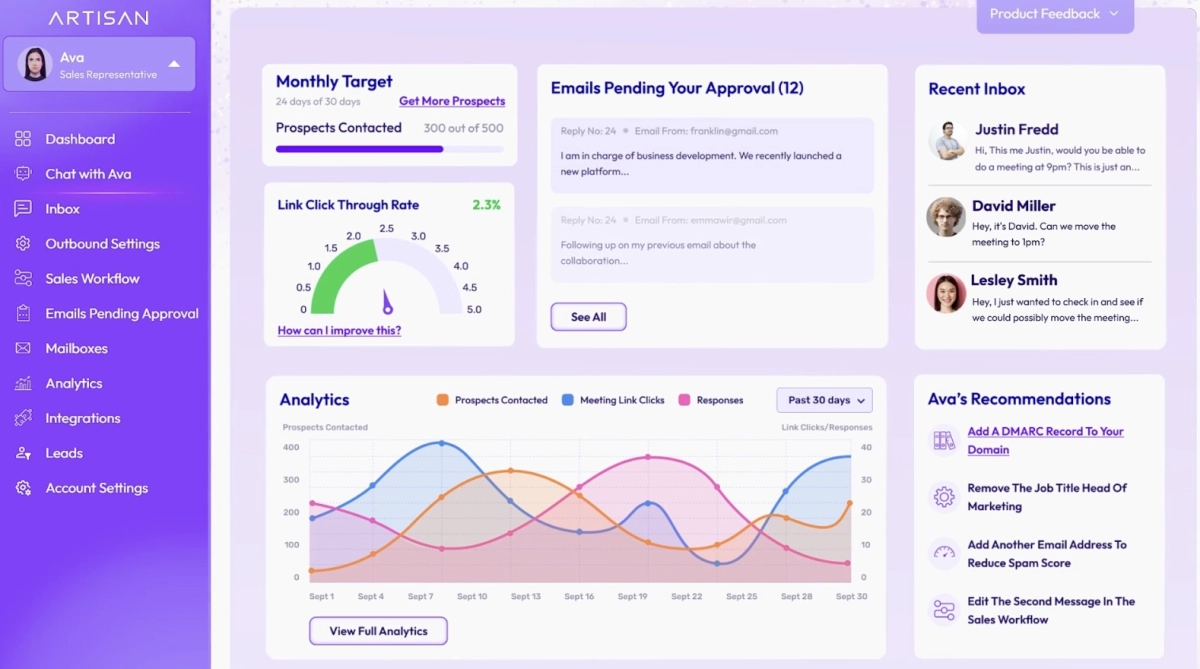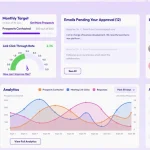
Let’s be honest. For a small business owner, “sales forecasting” often means squinting at a spreadsheet, crossing your fingers, and hoping you’ve ordered enough stock—but not too much. It’s a gut-feeling game. And frankly, your gut has enough to deal with already.
But what if you could see around corners? What if you had a crystal ball that didn’t just show you a hazy future, but gave you a clear, data-driven roadmap? That’s the promise of AI-powered sales forecasting. And no, we’re not talking about a tool only for Fortune 500 companies with massive IT departments. This technology is now firmly in the realm of the everyday entrepreneur.
What Exactly Is AI Forecasting? (And What It’s Not)
First, let’s demystify it. Traditional forecasting often relies on looking at last year’s numbers and adding a flat percentage for growth. It’s like driving by only using your rearview mirror.
AI-powered sales forecasting, on the other hand, is like having a state-of-the-art GPS. It analyzes a vast array of real-time data—not just your past sales, but also things like:
- Website traffic and user behavior
- Current marketing campaign performance
- Local economic indicators
- Even broader trends, like seasonal shifts or social media sentiment.
It finds the hidden patterns, the subtle correlations that a human brain would simply miss while juggling a hundred other tasks. The AI learns from this data, constantly refining its predictions to give you a dynamic, living forecast.
Why Your Small Business Desperately Needs This
You might think, “My business is small, my data is messy… is this really for me?” Well, that’s precisely why it’s for you. Here’s the deal: small businesses feel the sting of inaccurate forecasts more acutely than anyone. A missed prediction doesn’t just mean a slightly lower bonus; it can mean payroll anxiety or wasted capital on dead inventory.
Cash Flow Clarity
This is the big one. AI forecasting gives you a much clearer picture of when money is coming in. You can stop the feast-or-famine cycle. Knowing with higher confidence what your revenue will be in 60 or 90 days allows you to make smarter decisions about hiring, investing in new equipment, or launching that new product line.
Smarter Inventory Management
Imagine knowing—not guessing—which products will fly off the shelves next season. AI can predict demand for specific SKUs, helping you optimize your stock levels. You reduce storage costs on slow-movers and never miss a sale because you’re out of the hot item. It’s a win-win that goes straight to your bottom line.
From Reactive to Proactive Strategy
Instead of constantly reacting to what just happened, you can start planning for what will happen. If the AI flags a potential dip in sales for a core product, you have the lead time to ramp up a marketing campaign or cross-promote another service. You shift from firefighter to strategic commander.
| Traditional Forecasting | AI-Powered Forecasting |
| Relies heavily on historical data and manual intuition. | Analyzes historical, real-time, and external data automatically. |
| Static and infrequently updated. | Dynamic, learning, and constantly refining. |
| Prone to human bias and oversight. | Identifies complex, non-obvious patterns. |
| Time-consuming to create and adjust. | Automated, freeing up valuable time. |
Getting Started Without Getting Overwhelmed
Okay, so you’re sold on the “why.” The “how” feels daunting, right? It doesn’t have to be. You don’t need to build a supercomputer in your back office. The key is to start simple. Honestly, the barrier to entry is lower than you think.
1. Audit Your Existing Data
You have more data than you realize. Start by gathering it in one place. This includes:
- Sales records from your point-of-sale (POS) system or e-commerce platform.
- Customer contact info and purchase history (even in a simple CRM or spreadsheet).
- Website analytics (Google Analytics is a goldmine).
- Marketing campaign results from email or social media.
2. Choose the Right Tool for You
Many modern business tools have AI features baked right in. You’re likely already using some of them. Look for AI-driven forecasting capabilities in:
- Your CRM: Platforms like Salesforce (with Einstein AI) or HubSpot offer predictive scoring and forecasting.
- Accounting Software: Tools like QuickBooks use machine learning to project cash flow.
- E-commerce Platforms: Shopify has apps and built-in analytics that predict sales trends.
- Standalone Apps: There are dedicated, affordable apps that connect to your existing data sources to provide forecasts.
3. Trust the Process, But Keep Your Boots On the Ground
This is crucial. AI is a powerful advisor, not an oracle. The best approach is a hybrid one. Let the AI crunch the numbers and spot the macro-trends, but you bring the context. You know that a big local event is happening next month, or that a key supplier is having issues. Blend the AI’s data-driven insight with your own ground-level intelligence.
Don’t expect perfection on day one. The models get smarter the more data they consume. It’s a learning process for both of you.
The Human Touch in a Machine World
Some folks worry that this is the first step toward robots running everything. I get it. But that’s not the reality. Think of AI forecasting less as a replacement for your intuition and more as its powerful amplifier. It handles the tedious, complex number-crunching, freeing you up to do what you do best: connect with customers, build your brand, and steer the ship with vision and passion.
It’s about working smarter, not just harder. It’s about replacing uncertainty with informed confidence.
So, the question isn’t really if you can afford to try AI-powered sales forecasting. In today’s competitive landscape, the real question is, can you afford not to? The future isn’t just something that happens to your business anymore. You can now, finally, start to see its shape—and get ready to meet it head-on.







